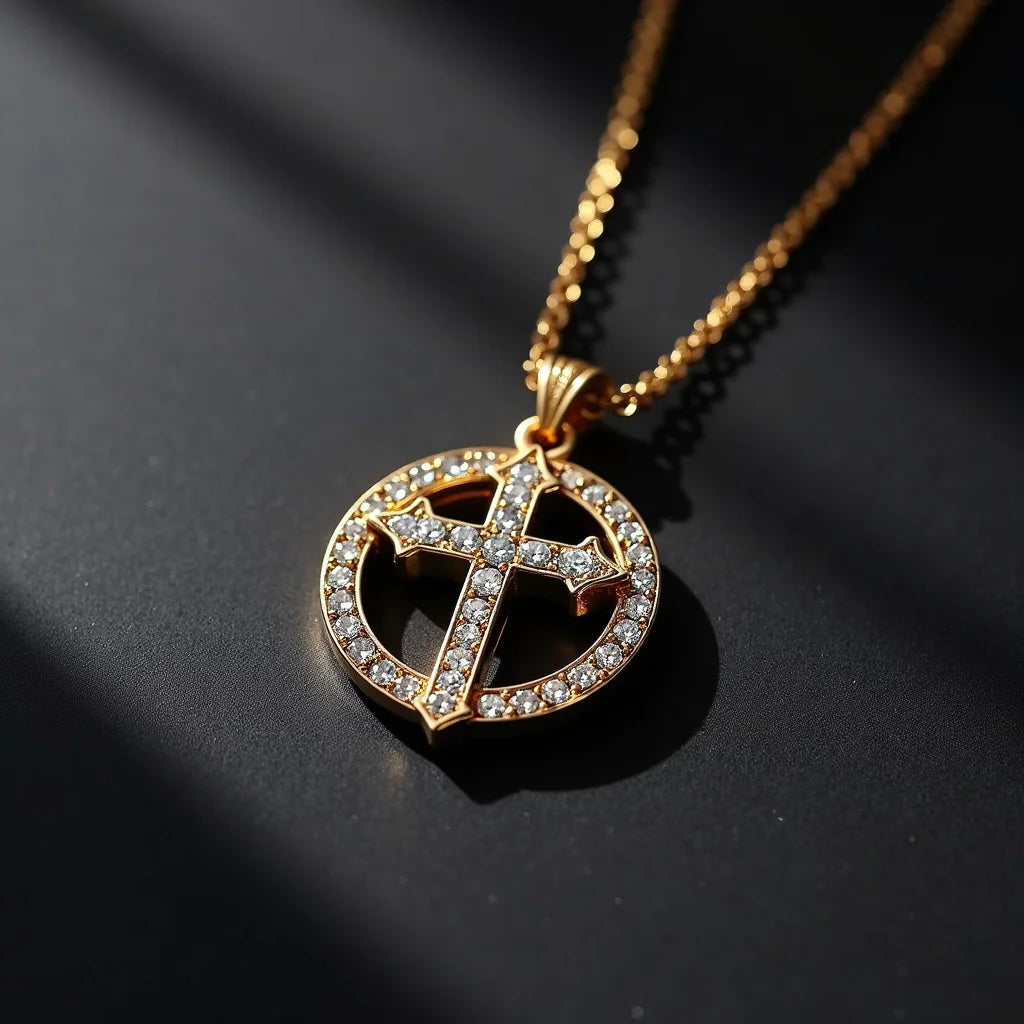
Religious Pendants 7 Mistakes Shoppers Still Make Often
Share
Updated on: 2025-09-26
This guide offers a clear, gentle overview of religious pendants, from meaningful symbols and materials to sizes, chain lengths, and everyday care. You will find simple steps for choosing a piece that feels personal—whether you prefer faith pendants, spiritual pendants, or a classic cross necklace. It also answers common questions about metals, durability, and personalization like custom engraved religious pendants. Helpful internal links are included if you would like to explore popular collections and designs.
Table of Contents for Religious Pendants Guide
- Why Religious Pendants Matter for Everyday Wear
- How to Choose and Care for Religious Pendants: A Simple Guide
Step 1: Clarify your intent and meaning
- Step 2: Select a symbol and style you connect with
- Step 3: Choose materials that suit your skin and lifestyle
- Step 4: Pick the right pendant size and chain length
- Step 5: Match the pendant to your daily routine
- Step 6: Consider personalization and engraving
- Step 7: Review quality markers and comfort
- Step 8: Care, cleaning, and storage
- Common Questions About Religious Pendants Answered
- Religious Pendants: Summary and Gentle Next Steps
- About the Author: Expertise in Religious Pendants
Religious pendants hold meaning that many people value every day. Whether you are drawn to faith pendants, spiritual pendants, a traditional cross necklace, or saint medals, the right piece can feel both personal and respectful. In this guide, we explore how to choose religious pendants with care, including materials, sizes, chain lengths, and simple maintenance. You will also find ideas for gold religious pendants for men, delicate designs for everyday wear, and thoughtful options such as custom engraved religious pendants.
Why Religious Pendants Matter for Everyday Wear
Wearing religious pendants can be a gentle way to keep your values close. The symbol you choose—whether a cross, Om, trishul, a sacred figure, or saint medals—can serve as a quiet reminder of gratitude, strength, or compassion. Because these pieces are often worn daily, comfort, durability, and respectful craftsmanship may be especially important. Selecting a pendant that aligns with your intentions helps it feel supportive and authentic in many settings, from work to special occasions.
How to Choose and Care for Religious Pendants: A Simple Guide
Step 1: Clarify your intent and meaning
Consider what you would like your pendant to represent. Some prefer symbols of protection, others lean toward gratitude, guidance, or devotion. This personal reflection can guide your choices, including symbol, size, and finish. It also helps you select a piece that you will enjoy wearing consistently.
Step 2: Select a symbol and style you connect with
Symbols vary widely. A cross necklace offers a timeless, minimal style. An Om or trishul symbol can feel grounding and serene. Saint medals may honor a specific figure. Many shoppers enjoy contemporary lines, while others choose ornate engraving. If you appreciate subtle pieces, look for low-profile pendants that sit comfortably under a shirt collar. If you prefer a statement look, bolder designs or layered chains can feel expressive.
If you would like to browse varied motifs, you may find it helpful to explore curated designs in spiritual pendants and related categories that bring classic and modern aesthetics together.
Step 3: Choose materials that suit your skin and lifestyle
Metals and finishes can influence appearance, comfort, and maintenance. Common choices include:
- Gold-plated or gold-tone pieces: Warm color and classic appeal, including many gold religious pendants for men who prefer a stronger profile.
- Stainless steel: Often durable and low-maintenance, with a polished or matte finish.
- Brass or alloy with plating: Can deliver detailed designs at approachable prices; consider protective plating for longevity.
- Sterling silver or silver-tone: Cool-toned luster that pairs well with many outfits.
If you prefer a specific metal color—gold, silver, or mixed—let that guide you. For daily wear, durability and comfort are usually helpful priorities. If you have known sensitivities, choosing a metal that you already wear comfortably may feel reassuring. For symbolic textures, natural bead strands like Rudraksha malas can complement pendants and add meaning; you might like to see options in Rudraksha malas.
Step 4: Pick the right pendant size and chain length
Size and length influence how a pendant rests on the chest and how visible it appears.
- Smaller pendants (roughly 15–25 mm) feel discreet and light.
- Medium pendants (about 25–35 mm) balance visibility and comfort.
- Larger pendants (35 mm and above) create a bolder focal point.
Chain length guidelines many people find useful:
- 16–18 inches: Shorter, close to the collarbone; favored for minimal looks or layering.
- 20–22 inches: Versatile everyday length for most builds.
- 24–28 inches: Longer, relaxed drape; often chosen for larger pendants.
Consider your height, neck size, and desired placement. If you plan to layer, vary lengths by at least 2 inches so each piece sits neatly.
Step 5: Match the pendant to your daily routine
If you wear religious pendants daily, practical features can help. Smooth backs reduce friction on skin and clothing. Rounded edges and moderate weight can improve comfort. For a more active day, a sturdy chain, secure clasp, and stainless steel or coated finishes may feel reassuring. For occasional wear, high-polish or detailed designs can offer a special touch.
Step 6: Consider personalization and engraving
Custom engraved religious pendants can add initials, a date, or a short message. It is a gentle way to honor a memory or milestone. When considering engraving, confirm the available character limits, font style, and placement. Keep the message brief so it remains legible as the pendant ages.
Step 7: Review quality markers and comfort
Before purchasing, consider the finish quality (consistent plating or polish), the bail opening (large enough for your preferred chains), and the chain style (rope, box, snake, or link). A smooth underside and balanced weight help the pendant rest flat. If possible, check the clasp for easy use and reliability.
Step 8: Care, cleaning, and storage
Simple care can keep your pendant looking its best:
- Wipe gently with a soft, dry cloth after wear to remove surface oils and dust.
- Store separately in a pouch or compartment to reduce scratches.
- Avoid prolonged contact with moisture, perfumes, or lotions to preserve finish.
- If needed, use mild soap and water for a quick refresh; dry thoroughly before storing.
For symbolic designs, gentle handling of detailing and edges helps maintain crisp lines. If you enjoy sacred symbol pieces, you may like to view the Om pendant or explore bold figures in Hanuman pendants.
Common Questions About Religious Pendants Answered
What materials are best for religious pendants?
It depends on your preferences. Gold-tone and gold-plated pieces offer classic warmth; stainless steel is often appreciated for durability and ease of care; silver-tone designs provide a cool, refined look. If you wear your pendant daily, choose a material you find comfortable on your skin and a finish that aligns with your routine.
How do I choose the right size and chain length for a religious pendant?
Think about visibility and comfort. Small pendants around 15–25 mm feel subtle. Medium sizes (25–35 mm) suit many outfits. Larger pieces (35 mm+) create a bold presence. For chain length, 18 inches sits near the collarbone, 20–22 inches is a versatile daily choice, and 24–28 inches drapes lower. Adjust based on your height and layering style.
Can I wear religious pendants every day?
Many people do. For everyday wear, focus on comfort, smooth edges, and a secure clasp. Materials like stainless steel and coated finishes can be practical. Regular, gentle cleaning keeps the surface looking fresh.
Are religious pendants a good gift?
They can be thoughtful gifts when chosen with care. Consider the recipient’s preferred symbol, metal tone, and chain length. Personal touches, such as custom engraving, can make the piece feel especially meaningful.
What styles work well as gold religious pendants for men?
Men often prefer medium to larger pendants with a solid chain. Gold-tone or gold-plated finishes, minimalist symbols, and strong lines are popular. Bolder motifs and textured surfaces can also add character without feeling ornate.
Religious Pendants: Summary and Gentle Next Steps
Religious pendants can be a steady, personal companion—rooted in meaning and easy to wear. By clarifying your intent, choosing a symbol you value, selecting a comfortable material, and picking the right size and chain length, you will likely find a piece that fits your daily routine. If you enjoy refined simplicity, a cross necklace or a small Om can feel calming. If you prefer presence, consider a larger pendant with a sturdy chain. For heartfelt gifts, custom engraved religious pendants offer a personal note.
Should you wish to discover motifs and finishes, you may like exploring spiritual pendants for varied styles, pairing options with Rudraksha malas, a symbolic Om pendant, or expressive figures in Hanuman pendants. We hope this guide makes your selection comfortable and enjoyable.
About the Author: Expertise in Religious Pendants
harappakart harappakart
harappakart harappakart curates meaningful jewelry and accessories with a focus on respectful design, comfortable wear, and approachable care. With experience across faith pendants, spiritual pendants, and symbolic motifs, the aim is to help you choose pieces that feel personal and easy to enjoy. Thank you for spending time with this guide, and please feel welcome to visit again anytime.
